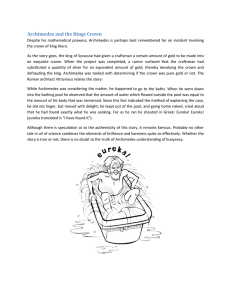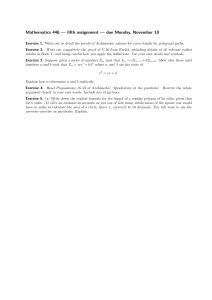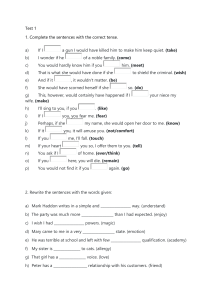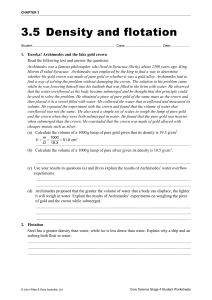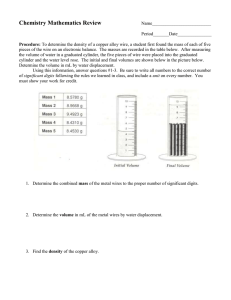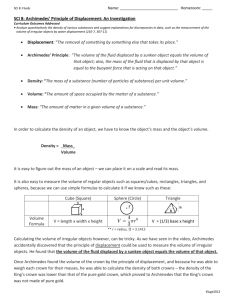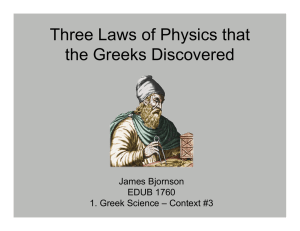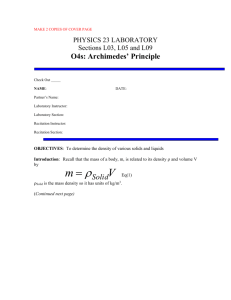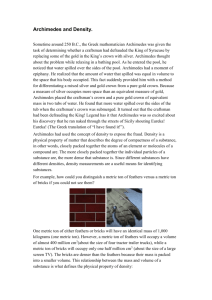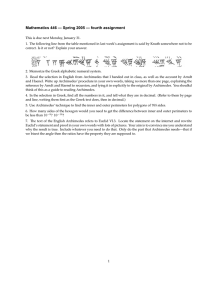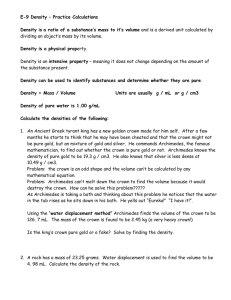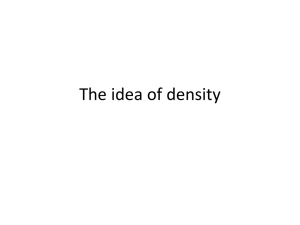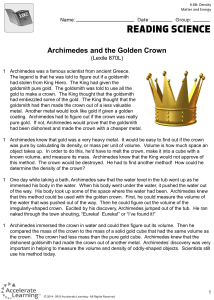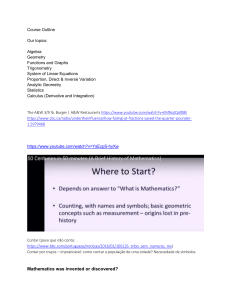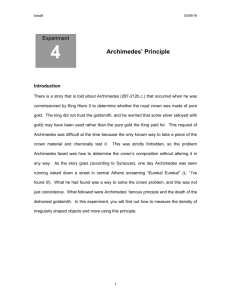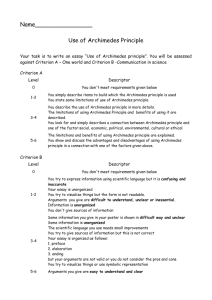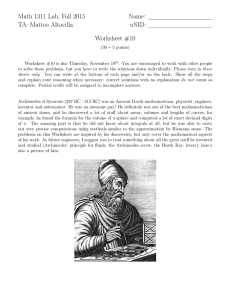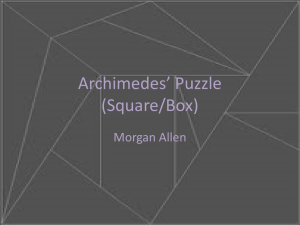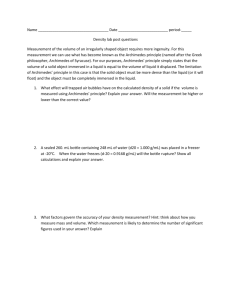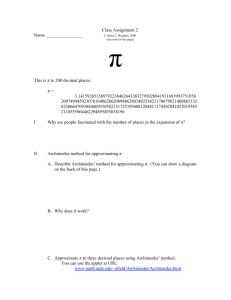Independent activity
advertisement
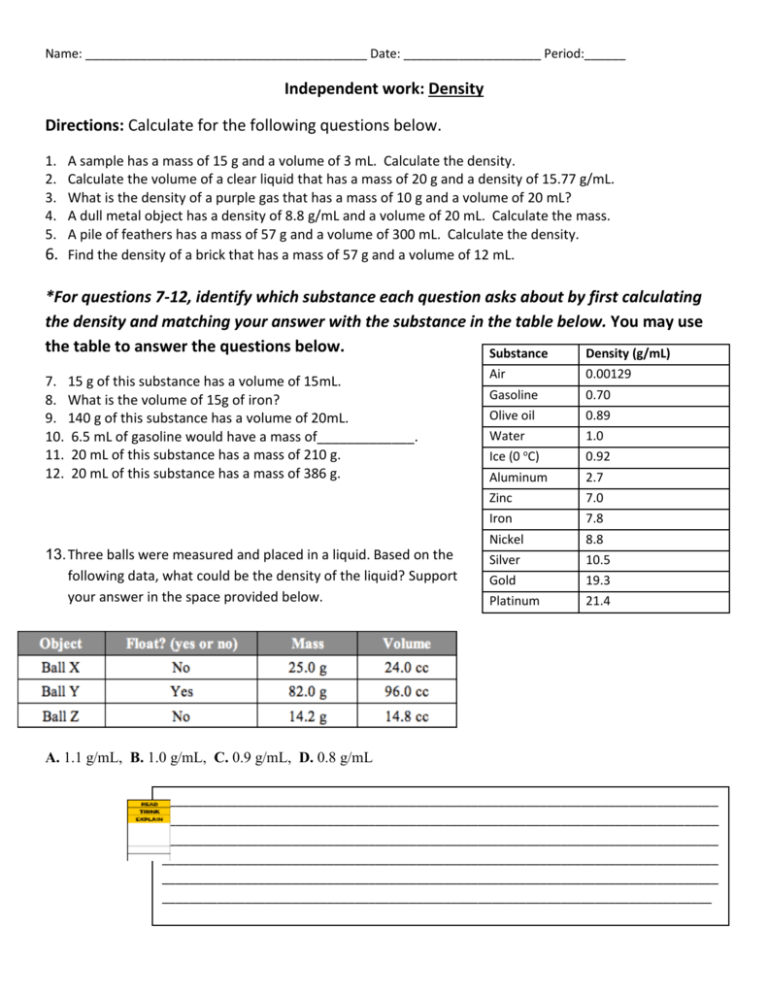
Name: _________________________________________ Date: ____________________ Period:______ Independent work: Density Directions: Calculate for the following questions below. 1. 2. 3. 4. 5. A sample has a mass of 15 g and a volume of 3 mL. Calculate the density. Calculate the volume of a clear liquid that has a mass of 20 g and a density of 15.77 g/mL. What is the density of a purple gas that has a mass of 10 g and a volume of 20 mL? A dull metal object has a density of 8.8 g/mL and a volume of 20 mL. Calculate the mass. A pile of feathers has a mass of 57 g and a volume of 300 mL. Calculate the density. 6. Find the density of a brick that has a mass of 57 g and a volume of 12 mL. *For questions 7-12, identify which substance each question asks about by first calculating the density and matching your answer with the substance in the table below. You may use the table to answer the questions below. Substance Density (g/mL) 7. 15 g of this substance has a volume of 15mL. 8. What is the volume of 15g of iron? 9. 140 g of this substance has a volume of 20mL. 10. 6.5 mL of gasoline would have a mass of_____________. 11. 20 mL of this substance has a mass of 210 g. 12. 20 mL of this substance has a mass of 386 g. 13. Three balls were measured and placed in a liquid. Based on the following data, what could be the density of the liquid? Support your answer in the space provided below. Air Gasoline Olive oil Water Ice (0 oC) Aluminum Zinc Iron 0.00129 0.70 0.89 1.0 0.92 2.7 7.0 7.8 Nickel Silver Gold Platinum 8.8 10.5 19.3 21.4 A. 1.1 g/mL, B. 1.0 g/mL, C. 0.9 g/mL, D. 0.8 g/mL _________________________________________________________________________________ _________________________________________________________________________________ _________________________________________________________________________________ _________________________________________________________________________________ _________________________________________________________________________________ ________________________________________________________________________________ 14. Introduction: In the third century B.C., King Hieron of Syracuse asked the famous mathematician Archimedes to determine if his crown was made of pure gold. This was a puzzling problem for Archimedes—he knew how to measure the weight of the crown, but how could he measure the volume? Archimedes solved the problem when he got into his bath and noticed the water spilling over the sides of the tub. He realized that the volume of the displaced water must be equal to the volume of the object placed into the water. Archimedes was so excited by his discovery that he jumped out of the bath and ran through the streets shouting “Eureka!” Question: How can you tell if a crown is made of solid gold? Think about it: Gold is one of the densest substances known, with a density of 19.3 g/cm3. If the gold in the crown was mixed with a less-valuable metal like bronze or copper, how would that affect its density? _________________________________________________________________________ _________________________________________________________________________
